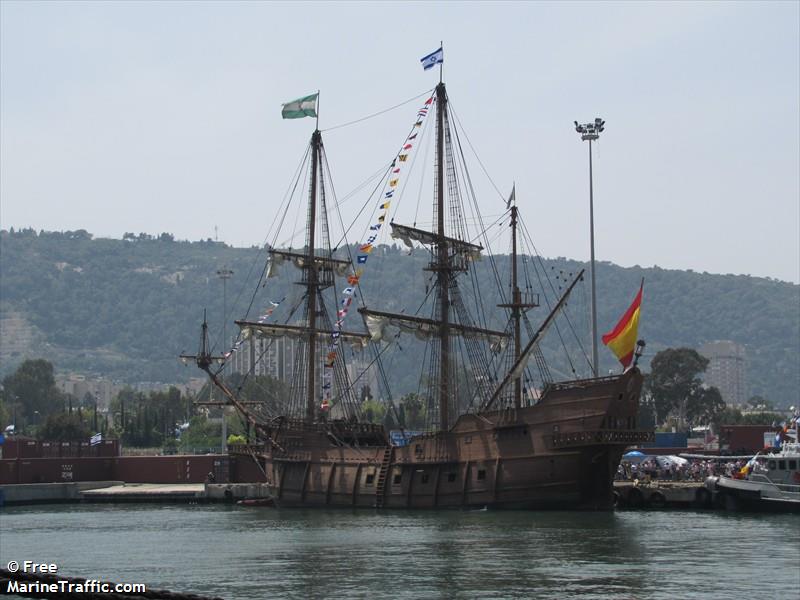 |
| In Spanish it's el galeon, not la galeon -- male! |
In English tradition, ships are referred to as "she." In fact, a ship is the only noun in the English language that has a gender, as my friend Ellen (The Cynical Sailor and His Salty Sidekick) explains in an amusing blog post titled "It's a Girl!"
Why are ships referred to as female? The rationale varies. In ancient times, ships might be given female names to honor the sea goddess(es), invoking a benevolent feminine spirit on the vessels that would carry seafarers across treacherous oceans. I've frequently heard the romantic notion that referring to ships as "she" stems from the tradition of boat-owners, typically and historically male, naming their vessels after significant women in their lives — wives, sweethearts, mothers. Some traditions said the ships were named after women because the captain was "married to his ship."
It lead to this politically-incorrect-but-a-product-of-its-time sign that's been popping up on my facebook page recently:
 |
| Politically incorrect, but a product of its time |
Double entendres aside, the ships-as-female tradition is far less universal than it seems.
In Spanish, all nouns are either masculine, and use "el" as the form of the word "the" to describe them, or feminine, and use "la" for "the." There is no "it." There's not a lot of rhyme or reason to the gender of nouns; knife and hat and floor and book are masculine and use "el," while window and spoon and mountain and scissors are feminine and use "la." But at some point last summer I realized that the tall ship we were on was called "El Galeon Andalucia." El Galeon. El, not la. Spanish words for all kinds of boats, from dinghies to fishing boats to sailboats to our mighty galleon, use "el." Masculine, unlike our English tradition of referring to boats as "she." I asked a couple of the guys about it while we were on watch one day and was told, yes, the big galleon is masculine. "After all," they explained, as their sketchy English met my sketchy Spanish, "the ship is a manly man, big and brave and strong to protect the crew. Four hundred years ago, it took a manly man, to sail across the Atlantic."
Whenever visitors would compliment the ship and say, "oh, she's so beautiful," I'd smile and tell them that story. "Thank you, and did you know that Spanish ships are male?" ...and I'd explain the historical logic. And when the above witty sign came up in my groups, I explained the Spanish historical logic to them as well. Then I polled the group members and learned that ships are male in Spanish, French, and Russian; and female in English, Italian, and Dutch. Fascinating!



Isn't language fun! It's a window into culture. Thanks for the shout-out :-)
ReplyDeleteYou are welcome! Enjoyed your story of the different descriptions of the bridge, depending on the gender of the word in German vs French. Good insight.
ReplyDelete